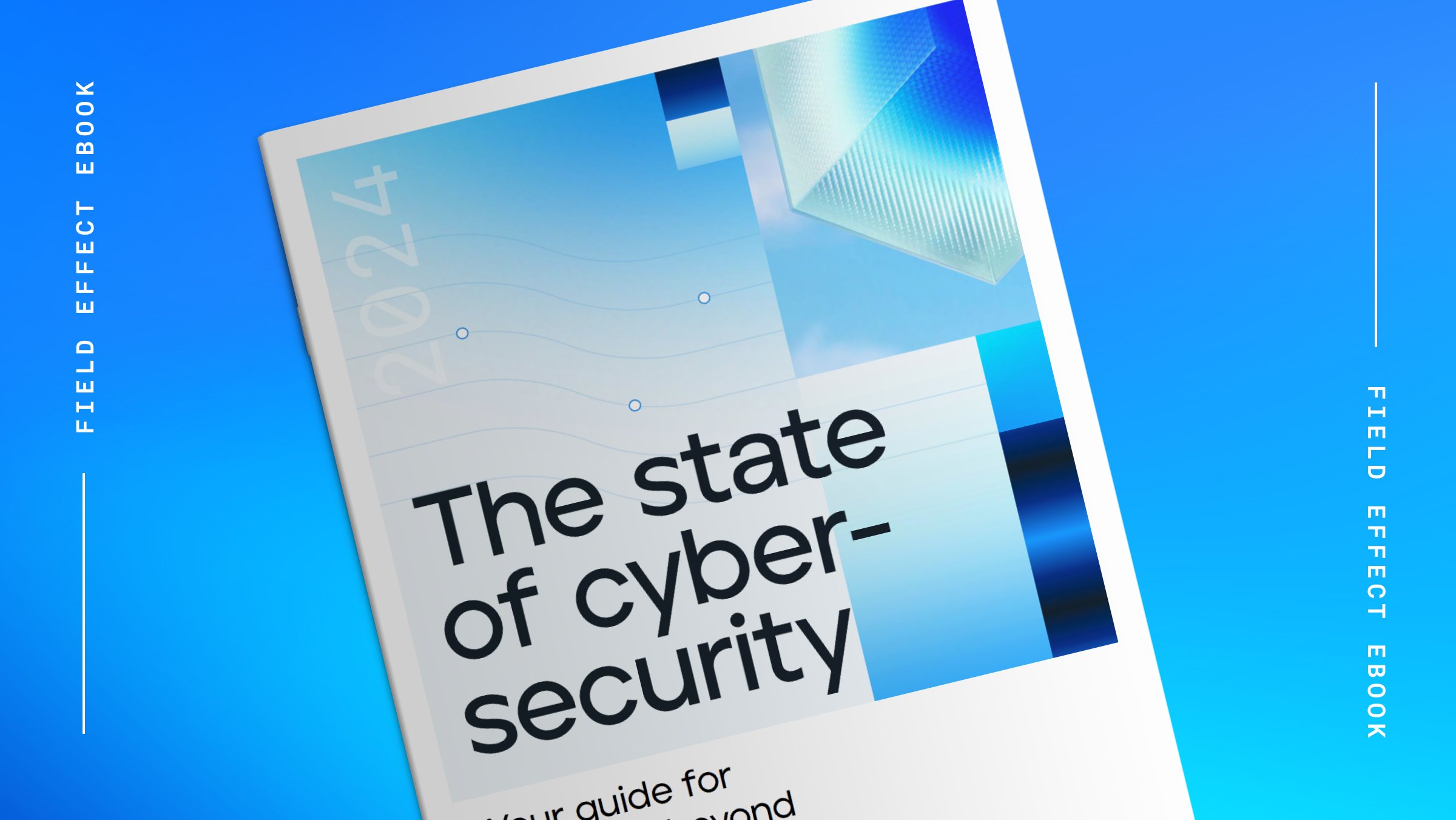
Blog Post
April 8, 2025 | Cybersecurity education
By Field Effect
With contributions from Eric McDonald.
In 2016, the European Union introduced the General Data Privacy Regulation (GDPR). Websites everywhere suddenly had very visible banners outlining cookie policies and commitments to data privacy.
The regulation’s roll-out highlighted just how much personal data businesses work with every day. Ongoing digital transformation has helped organizations of every size and in every sector reach more customers and clients than ever before—but it also means that all these businesses now have access to large amounts of sensitive information.
If this data is exposed to the public following an accidental data breach or a deliberate cyberattack, it can lead to serious harm. Exposed personal data may put customers and clients at risk of identity theft, financial fraud, or further cyberattacks.
Businesses that interact with personal data have a responsibility to safeguard this information. Taking steps to protect this data starts with understanding the concepts behind data privacy and what it means for businesses.
In this blog, you’ll learn:
Data privacy—sometimes referred to as information privacy—centers around how organizations collect, store, use, and share personally identifiable information (PII). Think of it as the set of controls that determine who gets access to what, and under what conditions.
Data privacy is closely related to consumer protection, giving individuals control over how organizations use and share PII. In fact, many of the laws and regulations governing data privacy emphasize the need for greater transparency and accountability; the GDPR, for example, explicitly outlines these principles.
There are several additional data privacy rights defined by the GDPR, which other regulations touch on:
PII covers a wide range of data that can be used to identify an individual—either alone or in combination with other information.
Sensitive PII includes, but is not limited to:
On the other side of the coin, non-sensitive PII may include:
On its own, non-sensitive PII may not pose a significant risk. But when paired with sensitive information, it creates a fuller picture—one that’s valuable to cybercriminals.
Data privacy isn’t just a checkbox for compliance. It’s a pillar of trust.
Beyond the requirements imposed by laws and regulations, data privacy protections are simply a good business practice. Protecting customer and client PII is a major factor in not just building, but maintaining, trust.
Dive into the past, present, and future of cyber security with The State of Cybersecurity eBook.
It’s not just trust, though: failure to protect sensitive data means businesses face severe legal and regulatory penalties. Businesses that don’t meet GDPR requirements, for example, could face fines up to €10 million or as much as 2% of the annual worldwide turnover of the preceding financial year.
That’s a lot of money for large enterprises—French authorities fined Google €150 million ($170 million USD) for issues with how the company manages cookies and for failing to provide users with a means of opting out.
GDPR isn't the only legislation that governs data privacy. Other regulations and laws include:
Put simply, data privacy is a big topic with massive ramifications for any business.
Every business collects data. That doesn’t mean every business has the same appetite for risk.
Retailers need to store payment information. Sales teams collect prospect data. But how much is too much—and how do you manage the risk that comes with it? Organizations must assess their tolerance for risks to find the right balance between collecting enough data to operate and the potential consequences of a data privacy breach.
Aligning with accepted cybersecurity standards—like the Canadian Centre for Cyber Security Baseline Controls, the National Institute of Standards and Technology (NIST) Cybersecurity Framework, and the International Organization for Standardization’s (ISO) ISO/IEC 270001 standard—is a great starting point for stronger data privacy practices.
Not sure where to start when it comes to enhancing data privacy protections? Here are five steps for building stronger data privacy policies and procedures:
Organizations can't protect what they can't see.
Building a better understanding of the threat surface—all those attackable points in IT infrastructure that a cybercriminal may access—will help identify vulnerabilities and assess overall risk.
From there, it's easier to make informed decisions about what solutions, policies, and practices will reduce the threat surface while enhancing defense. Of course, this also directly reduces the odds of experiencing a data breach.
Privacy starts with people. Building security awareness into company culture won’t happen overnight, and requires regular updates, ongoing security awareness training, and proactive diligence.
Ensure that everyone understands they have a role to play in safeguarding company data. Fostering a security-first mindset helps staff know what to do when they get a suspicious email or think they’ve been targeted by a hacker.
The zero-trust security model operates on the assumption that there is no perimeter in security. Put simply, there are no trusted devices. Every user, device, and request must be authenticated and verified every time.
Strong, complex passwords will always be a major line of defense against an attacker, and should ideally include a unique combination of letters, numbers, and symbols (or a hard-to-guess passphrase).
The problem is that making and remembering these unique and complex passwords is challenging.
Using password managers automates the entire process—users only need to remember a single unique master password, and can easily create, store, and use highly complex phrases and pins for all other logins. This eliminates reused passwords, making it much harder for attackers to compromise an account and access sensitive data.
On the topic of passwords and authentication, even strong passwords can be compromised. This is especially true with the help of automated hacking tools.
What’s more, social engineering techniques may still lead to a user accidentally sharing details with a malicious actor. That’s where multi-factor authentication (MFA) comes in.
MFA requires users to provide some additional unique token alongside their password to access an account or service. Even with a compromised password, an attacker will still require these additional tokens to access confidential information.
Data privacy isn’t just a compliance issue—it’s a client expectation and a business advantage.
Strengthening data privacy protections may seem overwhelming at first glance, but taking the time to put some of the practices outline above can help build better defenses to safeguard confidential information.


